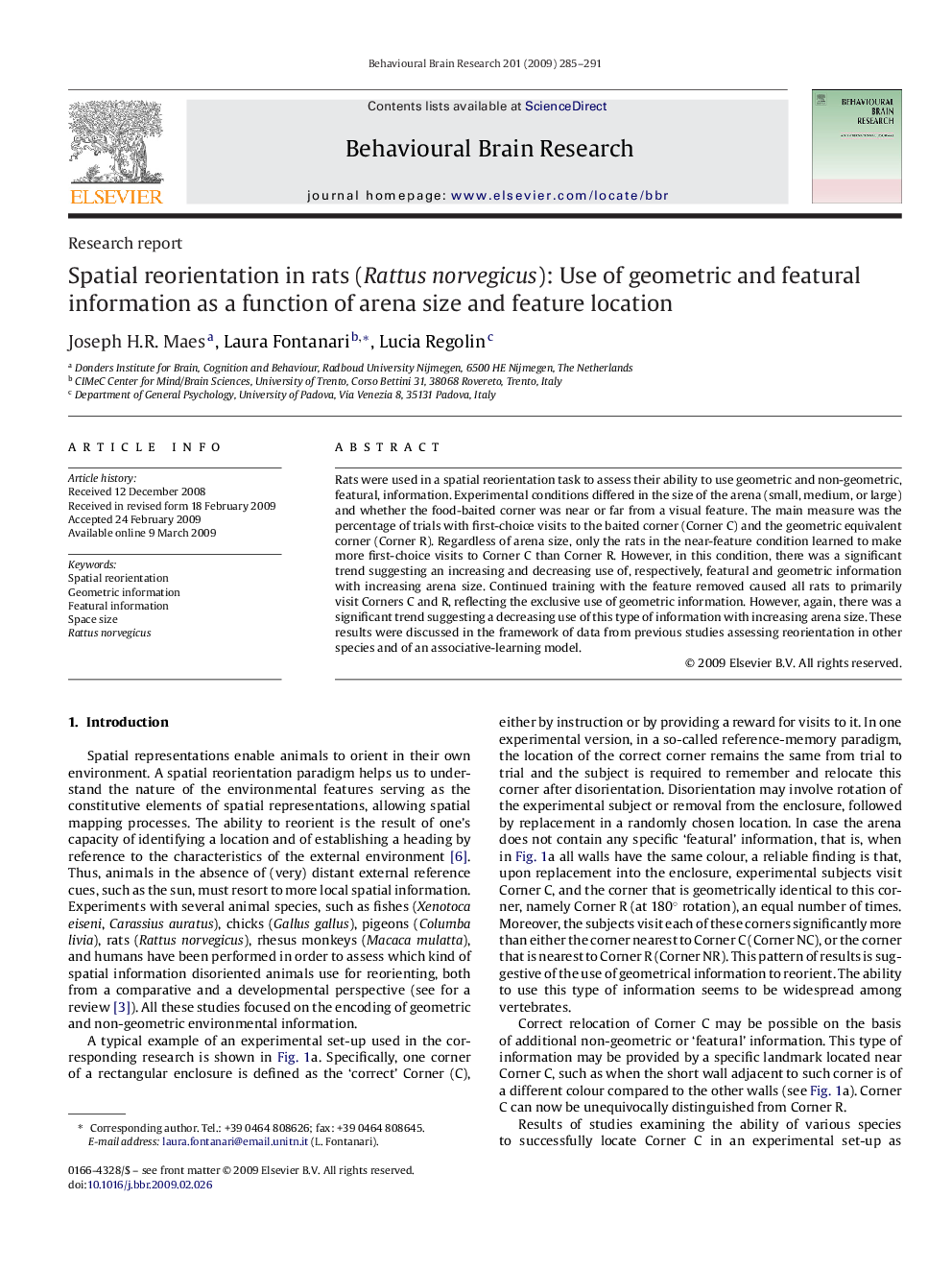| Article ID | Journal | Published Year | Pages | File Type |
|---|---|---|---|---|
| 4314720 | Behavioural Brain Research | 2009 | 7 Pages |
Rats were used in a spatial reorientation task to assess their ability to use geometric and non-geometric, featural, information. Experimental conditions differed in the size of the arena (small, medium, or large) and whether the food-baited corner was near or far from a visual feature. The main measure was the percentage of trials with first-choice visits to the baited corner (Corner C) and the geometric equivalent corner (Corner R). Regardless of arena size, only the rats in the near-feature condition learned to make more first-choice visits to Corner C than Corner R. However, in this condition, there was a significant trend suggesting an increasing and decreasing use of, respectively, featural and geometric information with increasing arena size. Continued training with the feature removed caused all rats to primarily visit Corners C and R, reflecting the exclusive use of geometric information. However, again, there was a significant trend suggesting a decreasing use of this type of information with increasing arena size. These results were discussed in the framework of data from previous studies assessing reorientation in other species and of an associative-learning model.
